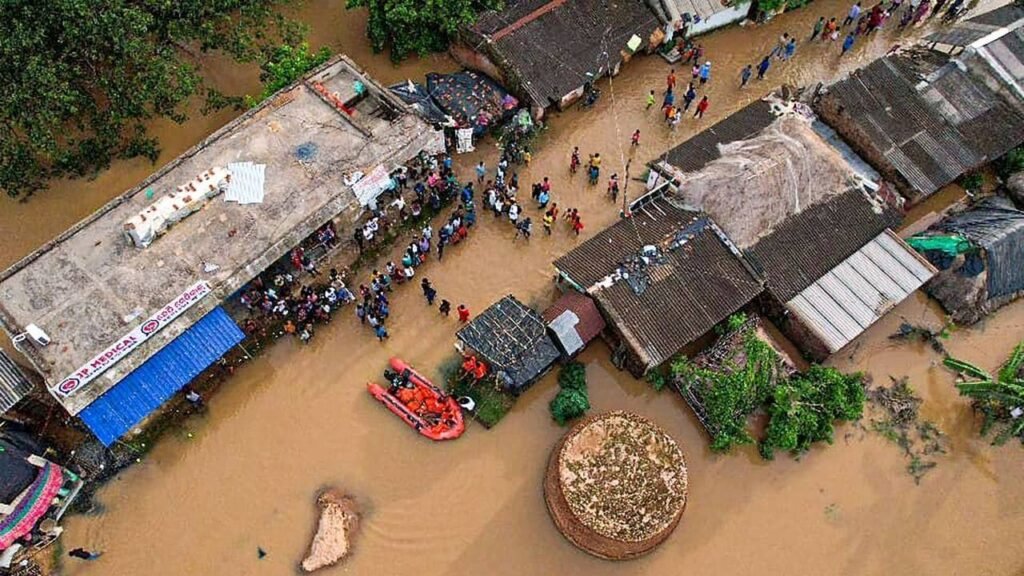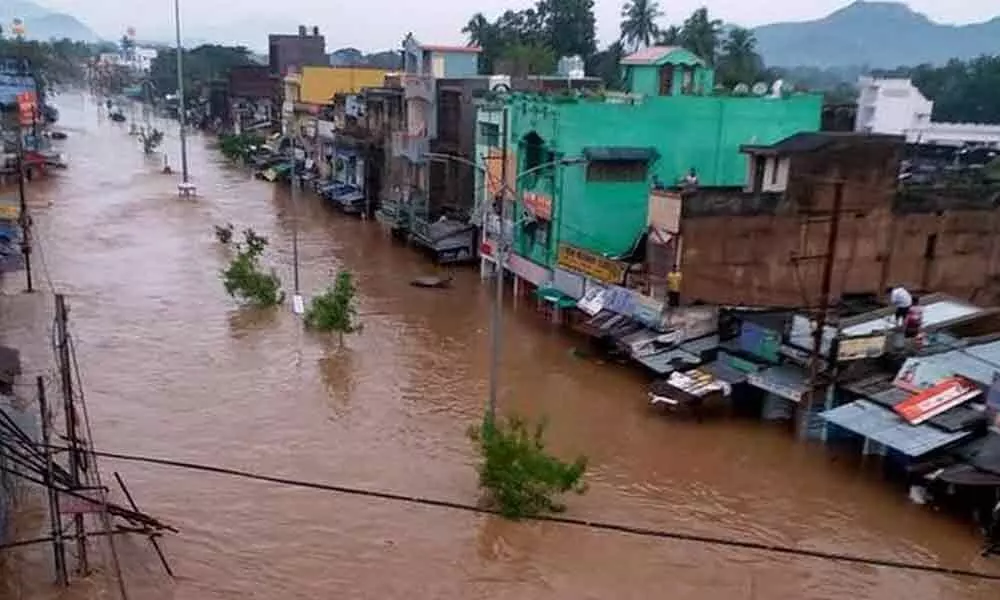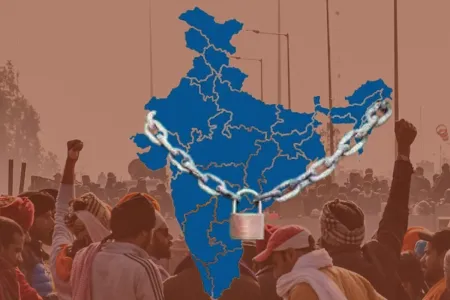Balasore district in Odisha is grappling with a major flood crisis. The Subarnarekha and Jalaka rivers, swollen by heavy rains and water released from Jharkhand’s Chandil Dam, have flooded over 100 villages in four blocks: Bhograi, Baliapal, Jaleswar, and Basta. Thousands of people are affected, with homes, roads, and crops underwater, leaving many residents stranded and in need of urgent help.
What Caused the Floods?
The flooding started on June 30, 2025, due to heavy rainfall in the Subarnarekha River’s upper areas and water released from Jharkhand’s Chandil Dam and Galudihi Barrage. The Subarnarekha River crossed its danger level of 10.36 meters, reaching 11.9 meters at Rajghat on June 21, 2025. The Jalaka River also overflowed, flooding parts of Basta and Balasore Sadar blocks. Although water levels are slowly dropping, the rivers remain dangerously high, keeping Balasore on alert.
Balasore MP Pratap Sarangi blamed Jharkhand for releasing water without warning, calling it a serious mistake. This lack of communication worsened the situation, catching Odisha off guard. Odisha’s Chief Minister Mohan Charan Majhi conducted an aerial survey of the affected areas and ordered officials to speed up rescue and relief efforts.

Impact on People and Communities
The floods have impacted over 50,000 people, with 17,000 stranded in Baliapal alone. As of July 1, 2025, 2,916 residents have been moved to 17 shelters, where they receive cooked meals and dry food. In Bhograi block, villages like Kusuda and Gabgaon are completely underwater, forcing people to take shelter on roads, bus stands, and cyclone shelters. A 25-year-old man, Maheswar Pila, tragically drowned in Baliapal on June 22, 2025, highlighting the crisis’s severity.
Residents are facing tough times, with many losing homes, livestock, and crops. “The water came into our homes at midnight. We had to run with our kids and animals to higher ground,” said Renubala Dalai from Jamakunda panchayat. Farmers are hit hard, with nearly 200 hectares of paddy and vegetable crops destroyed, threatening their livelihoods.

Government’s Response
The Odisha government has acted quickly, sending four teams of the Odisha Disaster Rapid Action Force (ODRAF), five Fire Services teams, and one National Disaster Response Force (NDRF) team to rescue people. Boats are being used to reach flooded areas, and 51 free kitchens are providing food to displaced families. The Rural Water Supply and Sanitation (RWSS) department is distributing clean drinking water, halogen tablets, and Oral Rehydration Solution (ORS) to prevent diseases. Balasore Collector Suryawanshi Mayur Vikas is overseeing operations, ensuring medical teams and relief supplies reach those in need.

Revenue and Disaster Management Minister Suresh Pujari said the situation is under control, with staff monitoring weak river embankments. The government is also talking to Jharkhand to address the issue of sudden water releases from dams, with plans to complete the Chandil Dam to better manage water flow.
Balasore’s Repeated Floods
This is the third flood in Balasore this season, with the Subarnarekha River overflowing multiple times. Social media posts on X reflect the frustration, with one user saying, “The third flood in a month has crushed northern Balasore. Crops are ruined, and lives have been lost.” The district’s problems are worsened by riverbank erosion, unpredictable rainfall, and poorly maintained embankments, issues seen in past floods like those in 2022.
The Indian Meteorological Department (IMD) has predicted heavy rain in Balasore, Mayurbhanj, and Keonjhar until July 5, 2025, raising concerns about more flooding. A red alert is in place, urging people in low-lying areas to stay cautious and ready to evacuate.

Support from Communities and NGOs
Local NGOs and companies are helping with relief efforts. On July 11, 2025, Bala Vikasa, Amazon, and Donatekart distributed 300 grocery kits to families in five flood-hit villages in Balasore. These efforts are vital for supporting communities struggling to recover.
Need for Long-Term Fixes
The repeated floods in Balasore show the need for lasting solutions. Chief Minister Majhi has asked the Water Resources Department to create a plan to manage flooding in the Subarnarekha River system. Experts suggest reinforcing river embankments, improving coordination with Jharkhand on dam water releases, and setting up better early warning systems to reduce future damage.
Balasore’s people are showing strength, but recovery will take time. With homes flooded, crops destroyed, and lives disrupted, the district needs ongoing support to rebuild and prepare for a future with fewer flood risks.
Last Updated on Saturday, July 12, 2025 6:03 pm by K Nikhil



